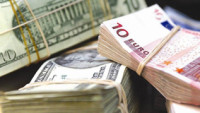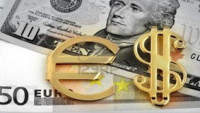 The common force yesterday was the revising of forecasts to the reality of slower growth, both domestically and globally. This was seen both by the US Federal Reserve and the UK Chancellor has he presented his budget. The Fed chopped 50bp from its median expectation for rates by the end of this year, the projection of four rate hikes given at the December meeting always looking too optimistic. But this has been the tendency of both central banks and markets over the past five years, in other words expectation of interest rate hikes being pushed ever further into the future. There has been a similar picture on the fiscal front and this was evident in the UK budget, where the Chancellor once again had to push out further into the future the point at which the UK was expected to turn in a budget surplus, with more being borrowed in the intervening years. The economy is seen growing more slowly, with lower productivity.
The common force yesterday was the revising of forecasts to the reality of slower growth, both domestically and globally. This was seen both by the US Federal Reserve and the UK Chancellor has he presented his budget. The Fed chopped 50bp from its median expectation for rates by the end of this year, the projection of four rate hikes given at the December meeting always looking too optimistic. But this has been the tendency of both central banks and markets over the past five years, in other words expectation of interest rate hikes being pushed ever further into the future. There has been a similar picture on the fiscal front and this was evident in the UK budget, where the Chancellor once again had to push out further into the future the point at which the UK was expected to turn in a budget surplus, with more being borrowed in the intervening years. The economy is seen growing more slowly, with lower productivity.
What does this all mean for currencies? Well, as always, it’s a relative game. Sterling relative to the dollar saw some recovery yesterday on the back of the weaker dollar, but in the wider picture will continue to push lower on the basis of interest rate differentials. The same is going to hold true again the euro, with EURGBP heading higher and threatening the 0.79287 high seen at the end of February. The other standout overnight has been the Aussie, up to the 0.76 level on the back of the latest labour market data, which showed the unemployment rate falling to 5.8%. Today, the main focus is on the BoE rate decision, where no change in policy is expected, but the accompanying minutes will be closely scrutinised for signs that a rate cut is being considered. If seen, this could add to the downward pressure on the UK currency.
Source: FxPro
Other useful information for traders:
- Forex Forecasts & Analysis
- Forex Brokers Reviews
- Rating Forex Brokers
- FxPro Reviews












